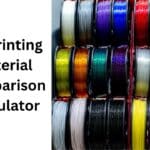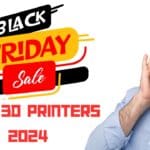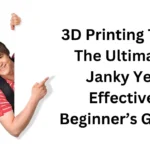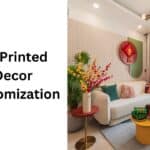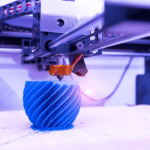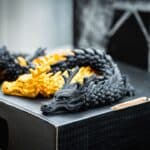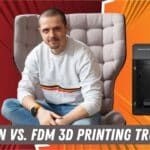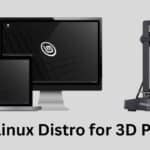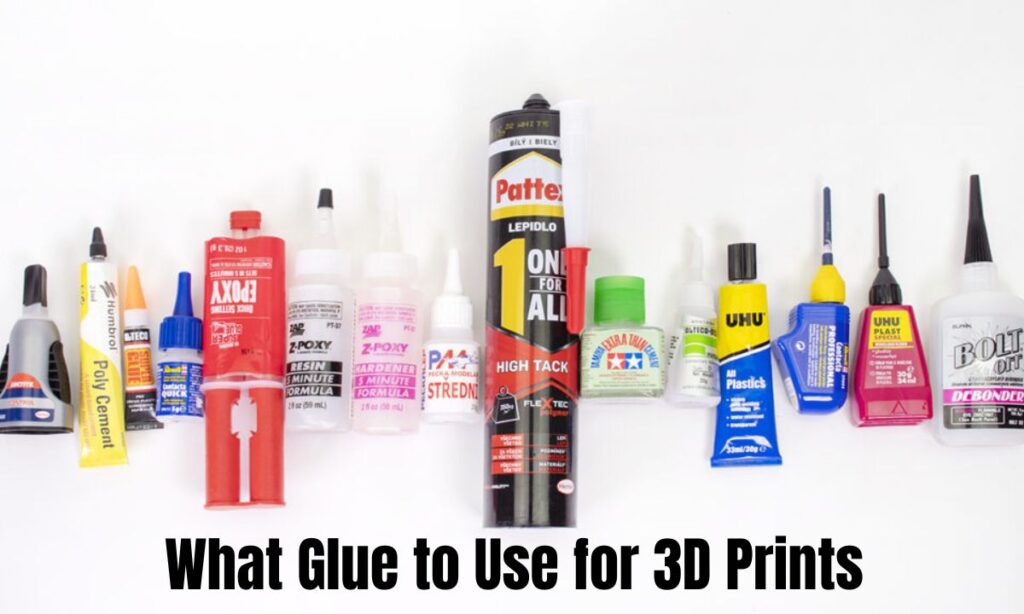
Selecting the right adhesive for 3D printing—like glue matched to filament—ensures strong, stylish bonds, with proper techniques elevating project quality.
Selecting the appropriate adhesive for 3D printing is crucial for achieving strong and durable bonds between printed parts. The right glue to use for 3D prints not only enhances the structural integrity of the model but also ensures that the aesthetic quality remains intact. Different adhesives offer varying strengths, drying times, and compatibility with specific materials, making informed choices essential for successful projects.
Common Challenges in 3D Printing Adhesion
Affiliate Disclosure
We participate in Amazon affiliate programs, earning fees from qualifying purchases via links at no extra cost to you. It’s how we keep this blog rolling and my 3D printers buzzing with fresh filament for reviews like this one!
Adhesion issues are common in 3D printing, often arising from factors such as surface smoothness, material compatibility, and environmental conditions like humidity. Poor adhesion can lead to weak joints, visible seams, or even complete failure of the printed part during use. Understanding these challenges helps in selecting the right adhesive and application techniques.
What Glue to Use for 3D Prints
Cyanoacrylate Glue (Super Glue): A Popular Choice
Cyanoacrylate glue, commonly known as super glue, is favored for its fast curing time and strong bond. It works well with most plastics, including PLA and PETG, making it a versatile option for many 3D printing projects. Its ease of use and quick application make it ideal for both beginners and experienced users alike.
Epoxy Resin for Strong Bonds
Epoxy resin creates exceptionally strong bonds and is suitable for a variety of materials. It consists of two components that must be mixed before application. While it requires more preparation than super glue, epoxy is ideal for larger gaps or when a robust joint is necessary.
PVA Glue: Water-Soluble Options for Certain Filaments
Polyvinyl acetate (PVA) glue is water-soluble and works well with water-soluble filaments like PVA itself. This type of glue is particularly useful in multi-material prints where temporary supports are needed, as it can be easily washed away after printing.
Specialized Adhesives for Unique Materials
Certain specialized adhesives are designed to work with unique materials such as nylon or flexible filaments like TPU. These adhesives often have specific properties that cater to the requirements of these materials, ensuring a reliable bond.
Matching Glue to Filament Types
PLA: Adhesion Tips and Compatible Glues
For PLA prints, super glue is highly effective due to its fast setting time and strong bond. Surface preparation, such as sanding the edges slightly, can enhance adhesion further by creating a better surface for the glue to grip.
ABS: Tackling Warping and Adhesion Challenges
ABS poses unique challenges due to its tendency to warp during printing. Acetone can be used to weld ABS parts together by slightly melting their surfaces. Alternatively, super glue or epoxy can also provide strong bonds if applied correctly.
PETG: Overcoming Adhesion Hurdles
PETG adheres well with super glue; however, using epoxy or specialized plastic bonding glues can yield even better results due to their stronger bonding capabilities.
Specialty Filaments: Nylon, TPU, and Others
Nylon and TPU require specific adhesives that can accommodate their flexibility and unique properties. Epoxy or specialized nylon adhesives are recommended for nylon prints, while flexible adhesives should be used for TPU.
Any specific Brands of Glue recommended for 3D printing
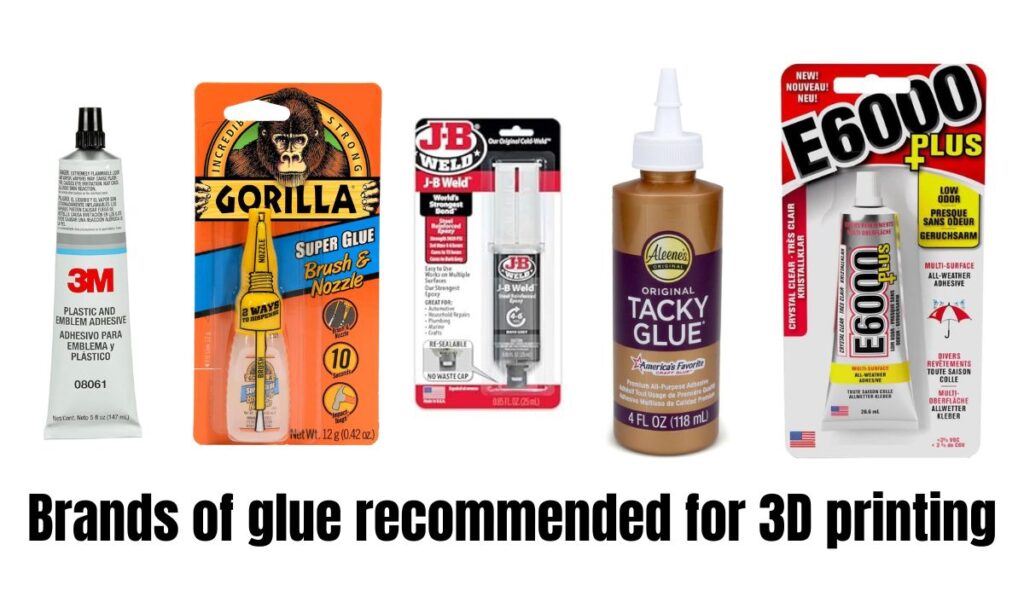
Here are some specific brands and their corresponding adhesives:
Loctite
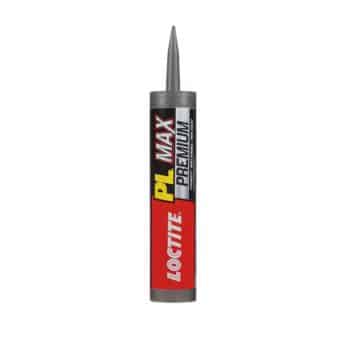
Versatile Construction Glue
- Brand: Loctite
- Specific Uses For Product: Construction bonding
- Material: Silane Modified Polymer
- Compatible Material:Wood, Fiberglass, Brick, Concrete, Metal, Marble, Stone, Granite
- Item Form: Paste, Cream
- Type: Cyanoacrylate (Super Glue)
- Details: Loctite is well-known for its cyanoacrylate adhesives, which provide a strong bond for materials like PLA, ABS, and PETG. Their quick-drying formula makes it ideal for rapid repairs and assembly.
Gorilla Glue
Gorilla Super Glue with Brush & Nozzle Applicator
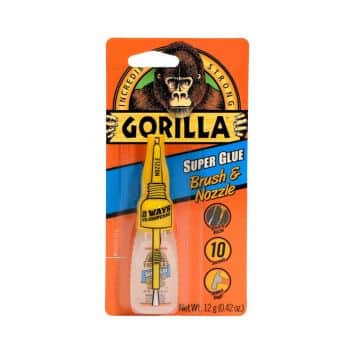
Clear Glue
- Brand: Gorilla
- Specific Uses For Product: Repair, Craft
- Material: Cyanoacrylate
- Compatible Material: Ceramic, Paper, Plastic, Metal, Rubber, Stone
- Item Form: Gel
- Type: Epoxy and Super Glue
- Details: Gorilla Glue offers a range of adhesives, including a two-part epoxy that is excellent for high-stress applications. Their super glue variant is also popular for general use due to its strong bond and versatility.
JB Weld
J-B Weld 8281 Professional Size Steel Reinforced Epoxy
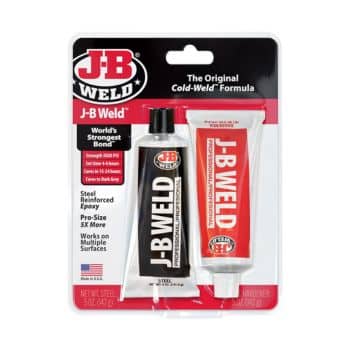
Hardener and Steel Pack
- Brand: J-B Weld
- Specific Uses For Product: Craft
- Material: Epoxy
- Compatible Material: Ceramic, Metal, Plastic, Polyvinyl Chloride, Steel, Wood, Fiberglass, Brick, Concrete
- Item Form: Paste
- Type: Epoxy
- Details: JB Weld is renowned for its epoxy products that create incredibly strong bonds suitable for heavy-duty applications. It is particularly effective for larger prints or parts that will undergo significant stress.
Aleene’s Tacky Glue
Aleene’s Tacky Glue
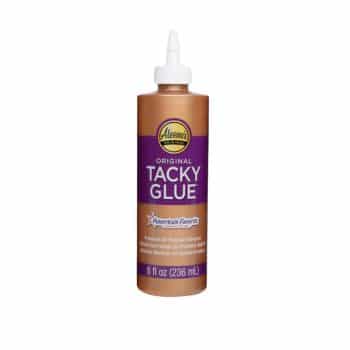
Nontoxic But Super Strong
- Brand: Aleene’s
- Specific Uses For Product: Craft glue, tacky glue, clear craft glue, paper glue, adhesive, glitter glue, liquid glue, school glue, cardboard glue, non-toxic glue, card making glue, teacher glue
- Compatible Material: Wood, Glass, Ceramic, Paper, Plastic
- Item Form: Liquid
- Special Feature: Craft glue, tacky glue, clear craft glue, paper glue, adhesive, glitter glue, liquid glue, school glue, cardboard glue, non-toxic glue, card making glue, teacher glue
- Type: PVA Glue
- Details: This water-based adhesive, Aleen’s Tacky Glue, is great for bonding PLA and other similar materials. It’s easy to clean up and dries clear, making it perfect for aesthetic projects.
Testors
Testors 3509C Glue
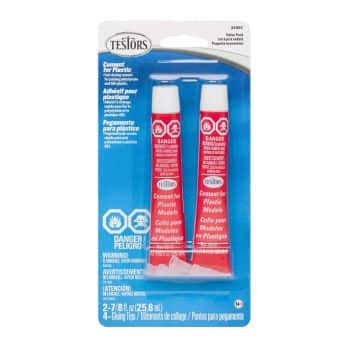
Plastic Cement
- Brand: Testors
- Specific Uses For Product: Model
- Material: Plastic
- Compatible Material: Plastic
- Item Form: Gel
- Type: Plastic Cement
- Details: Testors offers a plastic cement specifically designed for bonding ABS parts by chemically melting the surfaces together, creating a strong joint ideal for ABS prints.
3M
3M Plastic and Emblem Adhesive
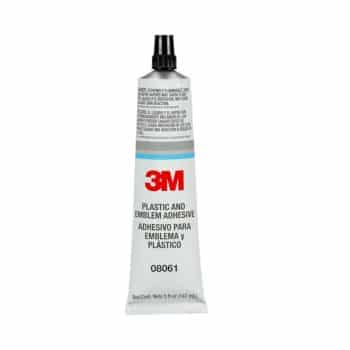
Sub Title
- Brand: 3M
- Specific Uses For Product: Automotive
- Material: Plastic
- Compatible Material: Vinyl, Plastic, Metal
- Item Form: Liquid
- Type: Various Adhesives
- Details: 3M provides a range of industrial adhesives, including those suitable for plastics and composites, making them suitable for more specialized applications in 3D printing.
E6000
Eclectic E6000 Plus Multi-Purpose Clear Glue
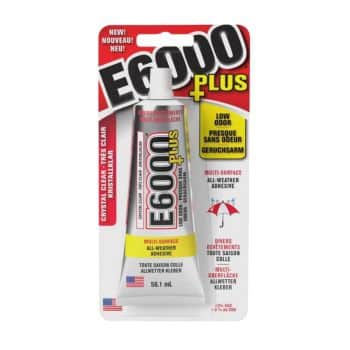
Waterproof and Paintable
- Brand: E6000
- Specific Uses For Product: Craft
- Material: Cyanoacrylate
- Compatible Material: Glass
- Item Form: Liquid
- Type: Industrial Strength Adhesive
- Details: E6000 is a versatile adhesive that works well with various materials, including flexible filaments like TPU. It provides a strong, flexible bond that can withstand impacts.
Choosing the Right Glue
When selecting glue, consider the following factors:
- Material Compatibility: Ensure the glue is suitable for the specific filament you are using.
- Strength Requirements: Choose a stronger adhesive for larger or more complex models.
- Drying Time: Consider how quickly you need the bond to set.
- Application Method: Some glues require precise application techniques; choose accordingly based on your project needs.
Best Practices for Applying Glue to 3D Prints
Applying glue to 3D prints requires careful attention to detail to ensure a strong and lasting bond. Here are some best practices and techniques for effectively applying glue to your 3D printed parts.
Preparation Steps
- Clean the Surfaces:
- Ensure that the surfaces you intend to bond are clean and free from dust, grease, or debris. Use a damp cloth or alcohol wipes for cleaning.
- Sand the Surfaces:
- If the surfaces are rough or uneven, lightly sand them with fine-grit sandpaper. This increases the surface area for adhesion and helps the glue bond more effectively.
- Apply Primer if Necessary:
- For certain adhesives, especially epoxy, applying a primer can enhance adhesion. Follow the manufacturer’s instructions regarding primer application.
Application Techniques
- Use Small Amounts of Glue:
- Apply glue in small amounts to avoid excess dripping and ensure even coverage. A little glue goes a long way in creating a strong bond.
- Utilize Precision Tools:
- For intricate parts, use tools like toothpicks or small brushes to apply glue precisely. This helps target specific areas without over-applying.
- Press and Hold:
- After applying the glue, firmly press the parts together. Use clamps or your hands to maintain pressure while the glue sets, ensuring a tight bond.
Tips and Tricks
- Allow Adequate Drying Time:
- Different adhesives have varying drying times; consult the manufacturer’s guidelines. Avoid disturbing the pieces during this period to prevent weakening the bond.
- Use Clamps or Jigs:
- For larger or complex assemblies, clamps or jigs can help hold parts in place while drying, ensuring they do not shift and compromise alignment.
Common Gluing Problems and Solutions
- Warping:
- If prints warp, they may not align properly when gluing. To mitigate this, use a heated bed during printing or apply clamps to hold pieces in place while drying.
- Gaps Between Parts:
- If gaps exist, consider using an epoxy filler or putty designed for 3D prints to fill voids before gluing.
- Blobs and Strings on Prints:
- Remove any excess filament blobs or strings with a sharp blade or sandpaper before gluing to ensure a clean bonding surface.
Signs that a Glue Bond on a 3D Print has Failed
Here are the key indicators of a failed glue bond in 3D prints:
- Visible Separation:
- If the glued parts start to visibly separate or pull apart, this is a clear indication that the bond has failed. Look for gaps or spaces where the pieces were once joined.
- Weak or Loose Joints:
- If you can easily move or wiggle the parts at the joint, it suggests that the glue has lost its grip. A strong bond should hold the parts firmly together without any movement.
- Cracks or Fractures:
- Inspect the area around the joint for any cracks or fractures. These can occur due to stress on the bond, indicating that it is no longer effective.
- Discoloration or Cloudiness:
- Some adhesives may become discolored or cloudy over time, which can signal degradation of the bond. This is particularly common with cyanoacrylate glues when exposed to moisture or UV light.
- Loss of Structural Integrity:
- If the overall structure of the print appears compromised (e.g., bending, sagging, or breaking), it may be due to failed adhesion at critical joints.
- Sound:
- Listen for unusual sounds when applying pressure to the joint. A popping or cracking sound may indicate that the bond is failing.
- Surface Peeling:
- If you notice that layers of material are peeling away from each other at the bonded area, this is a sign that the adhesive is no longer holding effectively.
Alternatives to Glue in 3D Printing
Here are some of the most popular alternatives:
1. Mechanical Fasteners
- Screws and Bolts: Using screws or bolts to join parts can provide a very strong connection, especially for larger assemblies. This method allows for disassembly and reassembly if needed.
- Nuts and Washers: Pairing screws with nuts and washers can distribute the load more evenly and prevent damage to the printed parts.
- Dowel Pins: Inserting dowel pins into aligned holes in the parts can help create a strong joint without the need for glue.
2. Heat-Based Methods
- Heat Welding: This technique involves using a soldering iron or hot air gun to melt the edges of the plastic parts together. Once cooled, the melted areas fuse to create a solid bond.
- Acetone Vapor: For ABS prints, exposing the parts to acetone vapor can soften the surfaces, allowing them to bond together as they cool. This method is particularly effective for creating seamless joints.
3. Bed Adhesion Aids
- Hairspray or Glue Stick: These can be used on the print bed to help with adhesion during printing, which can reduce the need for post-print gluing.
- PEI Sheets or Kapton Tape: These materials can improve initial layer adhesion, helping to prevent warping and reducing the need for additional bonding methods.
4. Interlocking Designs
- Snap-Fit Joints: Designing parts with interlocking features that snap together can eliminate the need for glue entirely. This method is often used in modular designs where parts need to be easily assembled and disassembled.
- Tapered Pegs and Holes: Creating tapered pegs that fit into corresponding holes can provide a secure fit without adhesive.
5. Chemical Bonding
- Solvent Welding: Similar to heat welding, solvent welding uses chemical solvents (like acetone for ABS) to dissolve the surface of the materials, allowing them to bond as they dry.
- Specialized Adhesives: Some manufacturers produce adhesives specifically designed for certain filaments that may not fall under traditional categories of glue.
FAQs About Glues for 3D Prints
Is Super Glue Safe for All Filaments?
While super glue works well with most rigid plastics like PLA and ABS, it may not be suitable for flexible materials like TPU due to its rigid nature once cured.
Can Glue Damage the 3D Print Surface?
Certain solvents used in gluing processes can damage delicate surfaces; always test on a small area first if unsure about compatibility.
What’s the Best Glue for Large Prints?
For large prints requiring strong bonds across multiple joints, epoxy is often the best choice due to its superior strength and gap-filling capabilities.
How Do You Remove Excess Glue Safely?
Excess dried glue can typically be removed using sandpaper or solvents like acetone; however, caution should be taken as these may also affect the print’s finish.
Are There Eco-Friendly Adhesive Options?
Yes! Some brands offer eco-friendly adhesives made from natural materials that are less harmful than traditional chemical-based glues.
What Glue Works Best in High-Humidity Environments?
In high-humidity environments, epoxy or polyurethane glues tend to perform better due to their moisture-resistant properties compared to standard cyanoacrylate glues.
Conclusion: Mastering Adhesion in 3D Printing
Choosing the right adhesive is essential for successful 3D printing projects. By understanding different types of glues available and their compatibility with various filaments, users can achieve durable bonds that enhance both functionality and aesthetics of their printed models. Proper application techniques and troubleshooting methods further ensure that projects meet desired quality standards.

